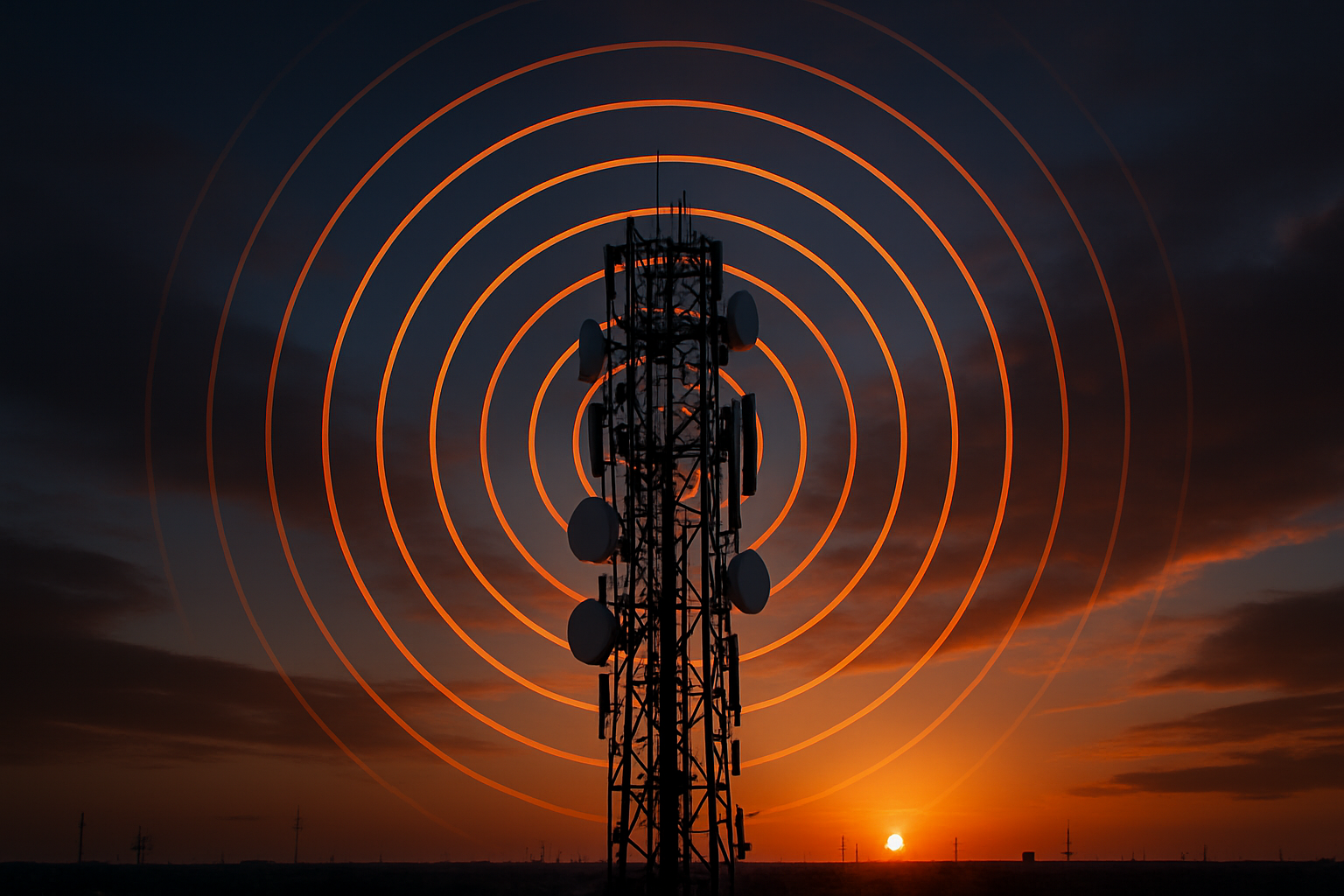Terahertz Waves: The Next Frontier in Wireless Communication
The quest for faster, more efficient wireless communication never ceases. As our digital world expands, so does the need for innovative solutions to transmit data. Enter terahertz waves, a promising technology poised to revolutionize wireless communication. This unexplored region of the electromagnetic spectrum offers tantalizing possibilities for ultra-high-speed data transfer, enhanced security, and unprecedented bandwidth capacity. But what exactly are terahertz waves, and how might they shape our connected future?

The history of terahertz research dates back to the early 20th century, but it wasn’t until recent advancements in semiconductor technology and photonics that practical applications became feasible. The “terahertz gap” – the technological challenge of efficiently generating and detecting these waves – has long been a stumbling block. However, breakthroughs in materials science and engineering are rapidly closing this gap, opening up new possibilities for wireless communication.
Potential Applications in Telecommunications
The most exciting prospect of terahertz technology lies in its potential to dramatically increase data transmission rates. As the demand for bandwidth continues to surge with the proliferation of streaming services, cloud computing, and increasingly data-hungry applications, terahertz communication could provide the capacity needed to meet these growing needs.
In densely populated urban areas, where traditional wireless networks often struggle with congestion, terahertz links could offer a solution. Their ability to transmit data at ultra-high speeds over short distances makes them ideal for creating high-capacity wireless networks in crowded environments like stadiums, airports, or office buildings.
Moreover, terahertz waves could play a crucial role in the development of next-generation mobile networks beyond 5G. While not suitable for long-distance transmission due to atmospheric absorption, they could be used for short-range, high-bandwidth connections, complementing existing network infrastructure.
Enhanced Security and Imaging Capabilities
One of the most intriguing aspects of terahertz technology is its potential for enhanced security in wireless communication. Terahertz waves have limited penetration through solid objects and are easily absorbed by the atmosphere, making them difficult to intercept over long distances. This property could lead to more secure wireless networks, particularly for sensitive data transmission in fields like finance, healthcare, and government.
Additionally, terahertz waves offer unique imaging capabilities. Unlike X-rays, they are non-ionizing and safe for biological tissues, opening up possibilities for advanced medical imaging and security screening applications. In the context of telecommunications, this could lead to new ways of visualizing and managing network infrastructure, potentially improving maintenance and troubleshooting processes.
Challenges and Technological Hurdles
Despite their promise, terahertz waves face significant challenges before widespread adoption in telecommunications becomes a reality. The primary obstacle remains the efficient generation and detection of these waves. While recent advancements have made progress in this area, further improvements in power efficiency and signal strength are necessary for practical applications.
Another challenge is the limited transmission range of terahertz waves. Due to atmospheric absorption, particularly by water vapor, these waves can only travel short distances before losing signal strength. This limitation necessitates the development of new network architectures and relay systems to extend coverage areas effectively.
Furthermore, the integration of terahertz technology with existing wireless infrastructure presents both technical and economic challenges. The transition to terahertz-based systems would require significant investment in new hardware and infrastructure, potentially slowing adoption rates.
Current Research and Future Prospects
Research institutions and tech companies worldwide are actively exploring terahertz technology for telecommunications. Recent experiments have demonstrated data transmission rates of several terabits per second over short distances, showcasing the technology’s potential. Ongoing studies focus on improving terahertz wave generation efficiency, developing more sensitive detectors, and creating novel materials for terahertz devices.
As research progresses, we can expect to see early applications of terahertz technology in specialized fields such as industrial automation, where short-range, high-bandwidth communication is crucial. In the longer term, terahertz waves could become an integral part of our wireless communication landscape, complementing existing technologies to meet the ever-growing demand for faster, more secure data transmission.
Regulatory Considerations and Standardization
As with any emerging technology in telecommunications, the development and deployment of terahertz communication systems will require careful consideration of regulatory frameworks. Currently, most regulatory bodies have not yet established specific guidelines for terahertz frequency use, presenting both opportunities and challenges for researchers and industry players.
The International Telecommunication Union (ITU) and other regulatory organizations are beginning to explore the potential allocation of terahertz spectrum for communication purposes. This process will be crucial in ensuring the orderly development and implementation of terahertz technology, as well as preventing interference with existing services.
Standardization efforts are also underway, with various industry consortia and standards bodies working to develop protocols and specifications for terahertz communication systems. These efforts are essential for ensuring interoperability between different terahertz devices and systems, as well as facilitating the technology’s integration with existing wireless networks.
Conclusion: A Glimpse into the Wireless Future
Terahertz waves represent a fascinating frontier in wireless communication technology. While significant challenges remain, the potential benefits of ultra-high-speed data transmission, enhanced security, and new imaging capabilities make terahertz technology an exciting area of research and development.
As we continue to push the boundaries of what’s possible in telecommunications, terahertz waves may well play a crucial role in shaping our wireless future. From enabling new applications in urban environments to revolutionizing short-range, high-bandwidth communication, the impact of terahertz technology could be far-reaching.
The journey from laboratory experiments to widespread practical applications is often long and unpredictable. However, the rapid progress in terahertz research and the growing interest from both academia and industry suggest that we may see terahertz-based communication systems sooner than we think. As we stand on the brink of this new era in wireless technology, one thing is clear: the future of telecommunications continues to be as exciting and dynamic as ever.





